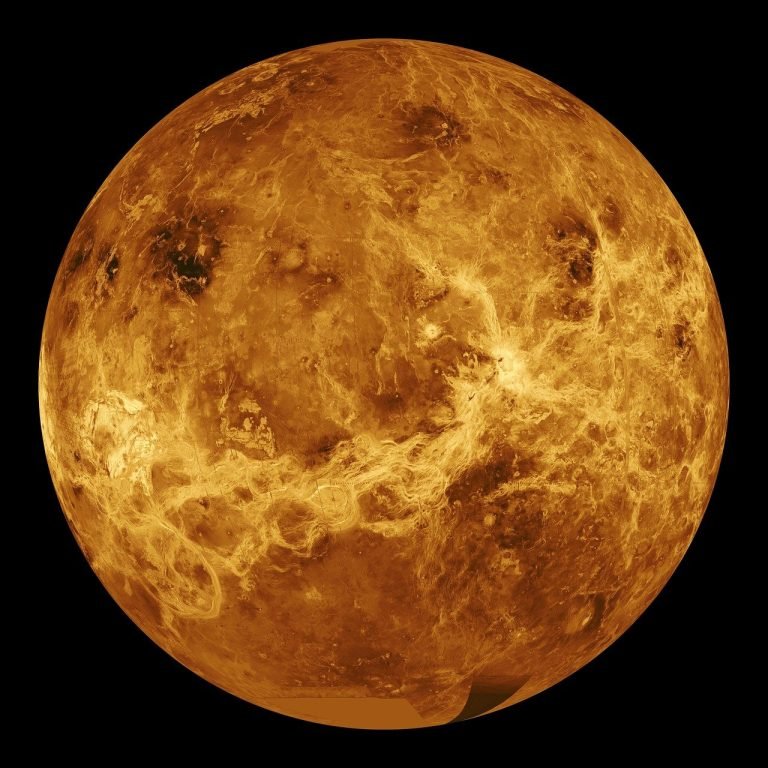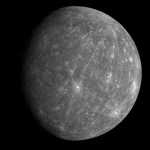Venus, often called Earth’s “sister planet,” is a fascinating and complex world in our solar system. With its unique characteristics and captivating features, Venus has piqued the interest of scientists and space enthusiasts alike. In this post, we will explore what Venus is, its physical features, its orbit, and some interesting facts that highlight the planet’s importance.
What is Venus?
Venus is the second planet from the Sun and is similar in size and structure to Earth, which is why it’s often referred to as Earth’s twin. However, despite these similarities, the two planets have very different environments and conditions.
- Size: Venus has a diameter of about 7,520 miles (12,104 kilometers), making it slightly smaller than Earth.
- Surface: The surface of Venus is rocky and covered with volcanoes, mountains, and vast plains. Unlike Earth, Venus has a thick atmosphere that obscures its surface from view.
Venus’s Orbit
Venus orbits the Sun at an average distance of about 67 million miles (108 million kilometers). It takes about 225 Earth days to complete one orbit, which means a year on Venus is longer than a day on Venus.
- Day Length: A day on Venus (the time it takes for the planet to rotate once on its axis) is about 243 Earth days. Interestingly, Venus rotates in the opposite direction to most planets, which means the Sun rises in the west and sets in the east.
- Temperature: Venus is the hottest planet in our solar system, with surface temperatures averaging around 900 degrees Fahrenheit (475 degrees Celsius). This extreme heat is due to a thick atmosphere that traps heat through a greenhouse effect.
Read This Also: Planet Mercury: The Closest Planet to the Sun
Unique Features of Venus
Venus has several unique characteristics that make it stand out from other planets:
- Thick Atmosphere: Venus has a dense atmosphere composed mainly of carbon dioxide, with clouds of sulfuric acid. This thick atmosphere creates a strong greenhouse effect, making the planet extremely hot.
- Surface Pressure: The atmospheric pressure on Venus is about 92 times greater than that of Earth, equivalent to being nearly a mile underwater. This pressure would crush most spacecraft.
- Volcanic Activity: Venus is home to many volcanoes, some of which may still be active. The surface is dotted with large volcanic structures, including shield volcanoes and vast lava plains.
Interesting Facts About Venus
Here are some intriguing facts about Venus that highlight its uniqueness:
- Named After a Goddess: Venus is named after the Roman goddess of love and beauty. Its brightness makes it one of the most visible objects in the night sky.
- No Moons: Unlike Earth, Venus has no moons or rings. This is likely due to its proximity to the Sun and its unique formation.
- Exploration: Venus has been explored by several spacecraft, including NASA’s Magellan, which mapped the planet’s surface using radar. The Soviet Union’s Venera missions successfully landed on Venus and sent back valuable data.
- Runaway Greenhouse Effect: The extreme heat on Venus is the result of a runaway greenhouse effect, where gases trap heat and cause surface temperatures to soar.
- Surface Features: Venus features large highland regions, vast plains, and extensive volcanic systems. The lack of water on its surface means there are no rivers, lakes, or oceans.
Why is Venus Important?
Studying Venus is crucial for several reasons:
- Comparative Planetology: By understanding Venus, scientists can compare it with Earth and learn about the different evolutionary paths that planets can take.
- Climate Studies: The extreme greenhouse effect on Venus provides insights into climate change and the potential future of Earth if greenhouse gases continue to increase.
- Understanding Planet Formation: Investigating Venus helps scientists understand how terrestrial planets form and evolve, which is essential for grasping the dynamics of our solar system.
Conclusion
Planet Venus, with its extreme temperatures and unique features, is a captivating subject of study in our solar system. While it shares similarities with Earth, the harsh conditions on Venus remind us of the diversity of planets that exist beyond our own.
The next time you look up at the night sky and see the bright “Evening Star,” remember that it’s not just a beautiful object but a planet full of mysteries waiting to be explored. By studying Venus, we not only enhance our knowledge of our solar system but also gain valuable insights into the conditions that can exist on other planets. Understanding Venus is crucial for the future of planetary science and our quest to find life beyond Earth.




